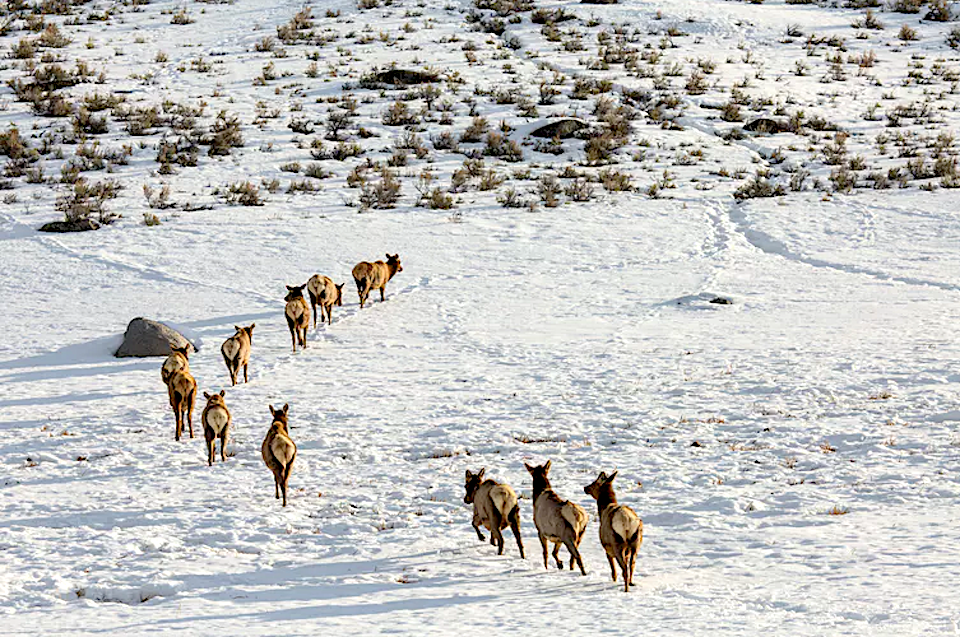
Elk numbers in Yellowstone's northern herd are down nearly 25 percent from a year ago/NPS file
Elk numbers are down in Yellowstone National Park's northern herd, and biologists say poor calf survival likely will prevent a rebound in the next two years.
While the overall count of 5,800 elk is down nearly 25 percent from a year ago, the total remains slightly above the ten-year average of 5,399, a park release said.
The Northern Yellowstone Cooperative Wildlife Working Group conducted its annual late winter classification of the northern Yellowstone elk population on March 17-19. The survey was conducted from a helicopter by staff from the Montana Department of Fish, Wildlife & Parks, which is part of the Working Group. Typically, an annual trend count is conducted by fixed-wing aircraft to count the total number of elk, and a separate helicopter survey is conducted to classify elk by age and sex in order to estimate calf and yearling bull survival and ratios of mature bulls in the population. This year the surveys were combined, and elk were counted and classified by helicopter.
All observed elk were counted across the survey area, and when possible staff also classified elk by age and sex. This survey was conducted consistent with the 2016 classification survey in order to assess population changes over the past three years. Survey conditions were favorable across the region, however winter conditions were severe, and many elk were observed to be in poor condition.
Staff counted 5,800 elk, including 1,361 elk (23.5 percent) inside Yellowstone, and 4,149 elk (71.5 percent) north of the park. The total of 5,800 elk was 23 percent lower than the 7,579 elk observed during the 2018 trend count. The long-term average of observed elk numbers since surveys began in 1976 is 10,634 elk, with a peak high count of 19,045 elk in 1994 and a low count of 3,915 elk observed in 2013.
Of the 5,800 elk counted, staff classified 5,510 elk by age and sex, resulting in ratios of 15.2 calves, 5.2 yearling bulls and 12.6 brow-tined bulls per 100 cows. Calf and yearling bull ratios were lower than recent surveys and long-term averages. Brow-tined bull ratios were higher than recent surveys, but below long-term average. Staff observed 16 percent fewer cows, 46 percent fewer calves, and 42 percent fewer yearling bulls as compared to the 2016 classification survey. Brow-tined bull numbers increased by 21.3 percent from 432 observed in 2016 to 524 observed in 2019.
This is the second consecutive year with calf ratios below the threshold of 20 calves per 100 cows considered necessary to maintain a stable population. It is likely that additional winter mortalities will occur into spring, further reducing overall numbers and recruitment. Below-average yearling bull and calf recruitment is likely to result in lower numbers of brow-tined bulls being recruited into the population over the next two years.
Though overall elk numbers are down this year as compared to 2018, it is not unusual to observe fluctuations in numbers of elk counted due to survey quality, elk movements and sightability of elk, which vary with conditions, according to staff biologists.
Trends in elk populations are best assessed by considering multiple years of survey data together. The trend for this population has been increasing since 2013; this is the first year since 2013 that elk numbers have fallen from the previous year. The Working Group will continue to monitor trends of the northern Yellowstone elk population and evaluate the relative contribution of various components of mortality, including predation, environmental factors and hunting.



Add comment